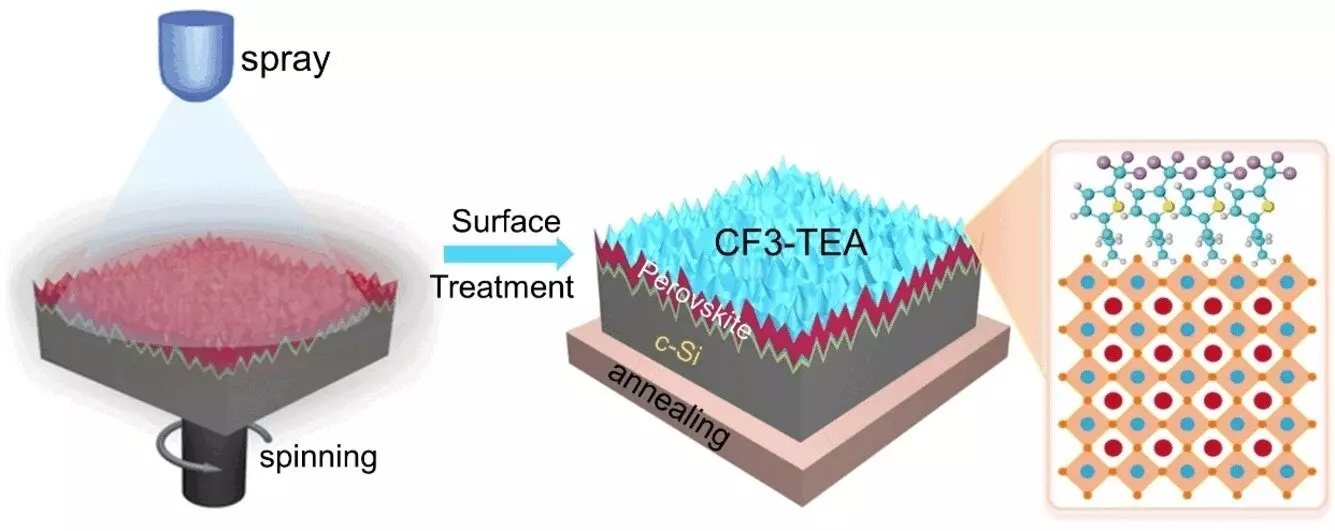Solar panels have become increasingly popular as a renewable energy source, but there is still room for improvement in terms of efficiency and cost. A recent study published in Angewandte Chemie International Edition has introduced a new coating technique that could revolutionize the industry.
One of the main challenges with traditional solar cells is their limited efficiency in converting sunlight into electricity. This is because light “knocks” electrons out of a semiconductor, leaving behind positively charged “holes,” which need to be separated and collected as current.
The research team behind this study has developed a coating of special organic molecules that can increase the efficiency of monolithic tandem cells made of silicon and perovskite while reducing their cost. This coating allows for the use of industrial, microstructured, standard silicon wafers, making the process more cost-effective.
The key to the success of this new technology lies in surface passivation. By applying a thiophenethylammonium compound with a trifluoromethyl group (CF3-TEA) using a dynamic spray coating process, the surface defects of the perovskite layer can be smoothed out. This coating effectively weakens the effects of the defects, suppressing nonradiative recombination and adjusting electronic levels for better electron transfer.
The use of CF3-TEA coating allows perovskite/silicon tandem solar cells based on common textured wafers made of Czochralski silicon to achieve a remarkable efficiency of nearly 31%. Additionally, long-term stability is maintained, addressing another common issue with traditional solar panels.
The success of this project is a result of collaboration between various institutions, including Nanchang University, Suzhou Maxwell Technologies, the CNPC Tubular Goods Research Institute (Shaanxi), the Hong Kong Polytechnic University, the Wuhan University of Technology, and Fudan University (Shanghai). This interdisciplinary approach has led to a groundbreaking innovation in the field of solar energy.
The development of a new coating technique using organic molecules has the potential to revolutionize the solar panel industry. By improving efficiency and reducing costs, this innovation could pave the way for a new generation of solar panels that are both sustainable and affordable. Collaborative efforts and innovative solutions like this are crucial in the transition towards a greener future.


Leave a Reply